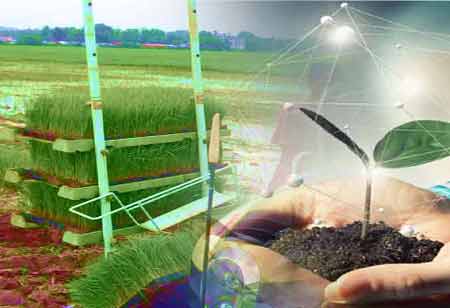Thank you for Subscribing to Agri Business Review Weekly Brief
Crop Yields Increased Through Vertical Farming
It appears as though modern farmers face multiple obstacles.

By
Agri Business Review | Monday, November 07, 2022
Stay ahead of the industry with exclusive feature stories on the top companies, expert insights and the latest news delivered straight to your inbox. Subscribe today.
Vertical farming carries a lot of possibilities and seems to be the way of the future farm. There are a few roadblocks to consider before plunging headfirst into vertical farming.
FREMONT, CA: It appears as though modern farmers face multiple obstacles. Soil erosion and degradation, erratic weather patterns and climatic turmoil, the necessity for safe pest management and fertilization, and many other factors must all be carefully inspected.
If one does not improve his or her farming operation, he or she may risk losing a whole season's worth of effort. Even if he or she handles everything perfectly, floods, fires, drought, or storms may cause him or her to lose.
Farmers count on innovative crop production processes and technologies to improve crop yields and protect themselves from losses. Vertical farming is a surefire way to expand production and reduce risk. It has a plethora of benefits that all farmers should entirely investigate.
Through conventional farming methods, around 40 pounds of lettuce can be produced per 100 square feet of planting space with typical row plantings. Conversely, vertical farming can produce almost three-quarters of a ton of leafy greens in the same area.
Plants per Acre
Vertical farms improve agricultural products in the most evident way by increasing the production of each acre. Classic field farms grow crops in long, low horizontal rows, necessitating large land. Vertical farming concerns stacking plants vertically in trays or towers, allowing a farm to farm more food while maintaining a much smaller footprint.
A farmer may produce dozens of plants in the same space as one by stacking plants vertically. Improving space in this manner makes it likely to confirm higher yields.
Increased Annual Harvests
It is typical for traditional farms to have only one or two harvests per year. Because of the seasonal nature of crop growth, it is practically unattainable to overwhelm this constraint. Regardless, seasonal variations are insignificant because vertical farms are commonly cultivated indoors.
Vertical greenhouses use a patented micro-climate technology. This technology facilitates our plants to receive suitable heat, light, humidity, and other environmental factors for their precise demands.
When farmers have complete control over the climate of their crops, they may bring them to maturity much faster and plant new ones as frequently as the cycle permits. With the short average reaping cycle of 28 days, growers can harvest 11-13 times annually. This denotes a considerable increase in crop output.
Crop Loss Considerably Reduced
Sidestepping crop loss is one of the most difficult issues in farming. Conventional farming methods make it hard to protect against extreme weather, bug swarms, pollution and contamination, and concerns about soil erosion. Many factors conspire against farmers, and the majorities are beyond their control when plants are cultivated in an open-air environment.
Vertical farming also gives solutions to these problems. Climate problems are virtually nonexistent within the controlled atmosphere of a hydroponic greenhouse. This guarantees that crop loss because of flooding or drought is unaffected.
Vertical farms may thrive where wild weather is the norm. These greenhouses resume producing even in bare deserts, the coldest tundra, and the most storm-prone areas.
Also, plants protected by the greenhouse system is especially less tending to pest issues. While these cannot be avoided completely, they are considerably more manageable without toxic chemicals.
Conversely, Vertical farms often avoid soil-related concerns through farming techniques that eradicate soil from the equation. Hydroponic farms are an excellent example, as they grow plants in water other than soil. This eradicates erosion and soil degradation, permitting plants to directly absorb the optimal mix of nutrients to their roots.
With all these crop-killing concerns eradicated or significantly decreased, farmers may be confident that their plants will mature, harvest, and arrive at the market. Contrast that with conventional agricultural systems, which lose between 20 % and 40 % of crops yearly to illnesses, animal pests, weeds, and much more to climate and weather catastrophes.





